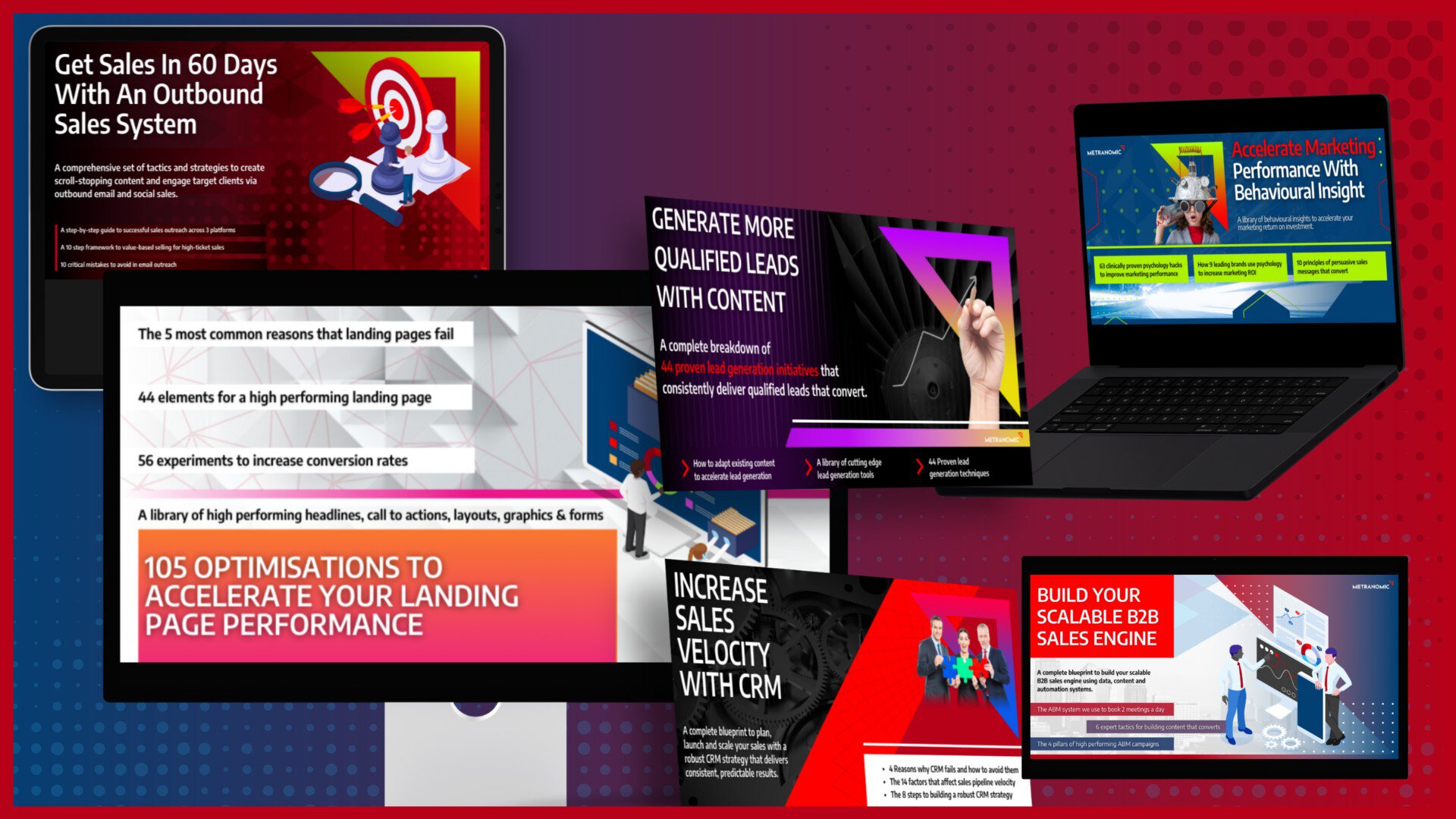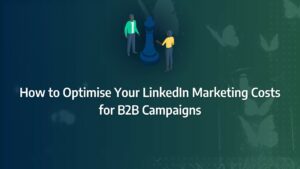Have you ever wondered how some businesses seem to stretch their advertising dollars further than others? The secret lies in mastering the art of ad budgeting—an essential skill that can make or break your marketing efforts. In this guide, we’ll unravel the complexities of ad budgeting, revealing strategies that can help you allocate your resources more effectively.
Whether you’re just starting out or looking to optimise your current ad spend, this post will provide you with the tools, techniques, and insights to make every penny count.
- Understand the importance of ad budgeting: Proper ad budgeting is crucial for small businesses to maximise their marketing ROI and compete effectively.
- Explore different types of ad budgets: Learn about fixed, variable, and hybrid budgets, and choose the best approach for your business needs.
- Follow a step-by-step approach to determine your budget: Consider your business goals, target audience, and competition to set a realistic and effective ad budget.
- Strategically allocate your budget across channels: Use data-driven strategies to ensure your ad spend is distributed effectively for maximum impact.
- Monitor and adjust your budget regularly: Keep an eye on performance metrics and adjust your budget as needed to optimise results.
- Avoid common pitfalls in ad budgeting: Steer clear of mistakes like over-reliance on a single channel or underestimating costs to maintain a balanced and effective budget.
- Utilise tools for efficient budget management: Leverage tools and software that help streamline ad budgeting and improve efficiency.
What is Ad Budgeting and Why is It Important to Plan Your Ad Spend?
Defining Ad Budgeting
An advertising budget refers to the amount of financial resources allocated by a company or agency for promoting its products or services. This figure is not arbitrary; it plays a pivotal role in determining the scope and effectiveness of marketing campaigns. In the context of project management within agencies, ad budgeting forms a core component of the overall project budget. It sets the foundation for all promotional activities, directly influencing how effectively your business can reach and engage your target audience. Proper advertising budget allocation is crucial to maximise marketing efforts, ensuring a healthy return on investment (ROI) and achieving long-term growth.
Key Components of an Advertising Budget
When determining your advertising budget, there are several critical components you must consider. Each element contributes to shaping an effective advertising budget plan:
- Media Purchases: This includes costs for purchasing advertising space across various platforms such as digital channels, print media, radio, and television. The selection of platforms should align with your target audience and campaign goals to optimise spend.
- Creative Production: The creation of compelling content is essential for any ad campaign. This includes the fees for copywriters, graphic designers, videographers, and other creative professionals required to craft high-quality advertisements.
- Advertising Agency Fees: If external experts are involved in developing and executing your ad campaigns, their services are a significant portion of your budget. It’s essential to factor in these costs early in the planning process.
- Market Research: Understanding your market is essential for effective advertising. Expenses related to researching market trends, conducting consumer testing, or performing competitive analysis must be included to ensure your campaigns are data-driven.
- Campaign Management: This accounts for the internal costs associated with the coordination and execution of your advertising initiatives, including labour and technological resources needed for smooth implementation.
The Importance of Ad Budgeting in Marketing Strategy
Effectively managing your ad budgeting is fundamental to maintaining control over your marketing efforts. By strategically allocating your advertising budget, you can make informed decisions on where and how much to invest, ensuring that every penny contributes towards meeting your goals.
- Exerting Control Over Expenditures A well-planned advertising budget allocation allows you to exert precise control over your spending, preventing both overspending and underspending. It provides a clear framework for tracking expenses against your pre-defined objectives. Regular monitoring also enables you to compare actual spend with planned expenditure, allowing you to analyse variances and adjust as necessary to optimise performance.
- Crafting a Well-Defined Marketing Plan Your advertising budget plan acts as the backbone of a well-defined marketing strategy. It outlines your goals, strategies, and tactics while assigning responsibilities to team members, ensuring accountability throughout the campaign lifecycle. Additionally, by forecasting the financial requirements of each marketing activity, you can align your competitive ad budget with overall business objectives, improving the likelihood of success.
- Facilitating Experimentation with New Campaigns A robust ad budgeting approach not only supports current campaigns but also encourages experimentation with additional strategies. Allocating a portion of your budget for testing new platforms, tools, or techniques allows your business to explore innovative avenues that could further enhance marketing effectiveness. This flexibility also helps you measure the impact of these experiments, learning from both successes and setbacks to continuously refine your approach.
What Matters Most?
Aligning ad budgets with measurable outcomes is crucial for enhancing accountability and maximising ROI. Clients often discover that creating flexible budgets enables them to pivot quickly in response to market trends, which can be a game-changer. Additionally, integrating brand-building initiatives into budgeting discussions typically yields long-term benefits that are often underestimated, ensuring that organisations maintain a balanced approach to immediate and future growth.Get In Touch
Components of a Successful Advertising Budget
Budgeting Methods
When it comes to ad budgeting, businesses typically employ a variety of methods to set their advertising budget. One widely used approach is the percentage-of-sales method, where companies allocate a fixed percentage—typically between 3 to 5 percent—of the current year’s revenue to next year’s advertising budget allocation. This method allows the budget to fluctuate in line with sales volume, providing flexibility.
Another common method is competitive parity, where businesses base their ad budgeting on what competitors are spending. By analysing competitor investments, companies can ensure their ad spend is competitive, aligning their advertising budget plan with industry norms to maintain visibility. Some businesses may choose to invest heavily in advertising to achieve more aggressive promotional goals, especially in highly competitive markets.
Affordability
Naturally, the amount of money available to your business directly influences how much you can allocate towards ad budgeting. Smaller businesses with annual profits of £100,000 will have more limited resources compared to multi-million-pound enterprises. As a result, a small business may set aside only £2,000 to £5,000 annually for advertising, while larger companies can afford to dedicate far more substantial sums.
In some cases, smaller businesses may not even have a formal advertising budget plan. Instead, they opt for incremental ad buys based on immediate needs or when they identify a short-term opportunity to promote their offerings.
Company Situation
A company’s specific circumstances also play a major role in determining advertising budget. New businesses, for example, often allocate more resources to advertising in the initial stages in order to build brand awareness and attract a customer base. In contrast, more established companies may spend less relative to revenue unless they are launching new products or entering new markets.
Businesses selling premium or highly differentiated products tend to allocate more to their competitive ad budget, as the need to communicate value and benefits is greater than for companies competing primarily on price. Larger markets and more competitive environments also require higher ad spend to ensure the brand can effectively reach and engage its audience.
Key Factors Affecting Advertising Budgets
1. Target Audience
Understanding the demographics, preferences, and behaviour of your target audience is crucial when planning your advertising budget allocation. Tailoring your ad spend to precisely target your ideal customers will significantly improve the likelihood of campaign success. For instance, a highly specific audience might require more targeted digital advertising, which could affect how you distribute funds across different channels.
2. Advertising Mediums
The choice of advertising mediums is another important consideration in ad budgeting. Each platform—whether digital, print, outdoor, or broadcast—has its own cost structure and effectiveness. Evaluating which channels are most likely to reach your audience and deliver on your objectives will guide your advertising budget plan. For example, digital channels may provide more granular targeting options, whereas traditional media like television can offer broader reach but at a higher cost.
3. Seasonality
Seasonal fluctuations can have a profound effect on both ad effectiveness and budget requirements. By adjusting your advertising budget allocation to account for seasonal trends, you can ensure that you capitalise on peak demand periods. Conversely, during off-peak times, you may need to scale back spend to avoid unnecessary expenditure, allowing you to optimise budget use throughout the year.
4. Advertising Frequency and Reach
Striking the right balance between frequency and reach is essential for maximising your campaign’s impact while staying within your competitive ad budget. Ensuring that your target audience is exposed to your messaging enough times to take action, without oversaturating them or wasting impressions, can make the difference between a successful campaign and an inefficient use of resources. This balance is key to ensuring your ad budgeting remains both effective and sustainable.
Top Digital Advertising Platforms for Effective Ad Campaigns
1. Google Ads
Google Ads remains a dominant force in the world of paid advertising, and for good reason. As the largest search engine globally, Google offers businesses the unique opportunity to display their pay-per-click (PPC) ads at the top of search results, giving them prime visibility to a vast audience.
Google Ads allows businesses to leverage its vast reach through both search and display ads. With the Google Display Network, you can place ads on popular websites, enhancing your campaign’s reach and impact. The flexibility of Google’s platform is particularly valuable in ad budgeting, as it operates on a bidding model. You can set a limit per click or even establish a daily budget, offering a clear and controlled approach to advertising budget allocation that aligns with your goals.
Google Ads is highly adaptable to different campaign sizes, making it a suitable option for businesses with varying levels of ad spend. Whether you have a competitive ad budget or are testing the waters with smaller investments, the platform offers excellent versatility.
2. Facebook Ads
Social media platforms provide an essential channel for advertisers, and Facebook Ads has proven to be one of the most powerful tools for reaching wide and diverse audiences. With its vast user base, Facebook is ideal for businesses looking to engage specific demographics through ad budgeting strategies that focus on user behaviour, interests, and demographics.
Facebook Ads supports a variety of formats, including image, video, and carousel ads. This flexibility allows businesses to tailor their messaging based on their objectives. It’s important to note, however, that without careful advertising budget allocation, Facebook campaigns can sometimes fail to generate the expected ROI. Therefore, setting an accurate advertising budget plan and aligning it with your campaign’s goals is crucial to avoid inefficient ad spend.
By targeting your audience effectively, businesses can make the most of their competitive ad budget on Facebook, ensuring their message reaches the right people at the right time.
Source: Ranktracker
3. Instagram Ads
Instagram, owned by Facebook, shares many of the same ad functionalities, making it easy to extend your social media advertising across both platforms. Instagram Ads allow you to display highly visual ads in a range of formats, from sponsored posts to stories. The platform’s appeal lies in its ability to target specific demographics, particularly younger audiences.
For brands targeting millennials and Gen Z, Instagram offers a powerful channel for visibility. Many businesses also engage influencers to promote their products or services, leveraging the influencer’s follower base to increase brand awareness. These influencer-led campaigns, often structured as “paid partnerships,” provide a way to maximise advertising budget allocation and reach a highly engaged audience.
With over a million users, Instagram can be an excellent choice for brands whose products resonate with younger audiences, and a thoughtful advertising budget plan can ensure businesses tap into the platform’s full potential.
4. LinkedIn Ads
Though sometimes overlooked, LinkedIn Ads is a highly valuable resource for B2B businesses, especially for those seeking to target professionals and decision-makers. LinkedIn’s ability to filter audiences by company size, sector, job title, and location makes it a powerful platform for businesses looking to generate leads in specific industries.
The precision of LinkedIn’s targeting options means that businesses can ensure their ad spend is being used efficiently, with campaigns directed towards the most relevant audience segments. For those with a competitive ad budget, LinkedIn provides opportunities to engage with high-value prospects through retargeting options, where you can reconnect with users who have previously shown interest in your business.
How to Calculate Ad Budgets
To effectively manage your ad budgeting, it’s crucial to start with clear objectives and a structured approach. Follow these steps to determine how much to allocate to your PPC (pay-per-click) campaigns:
Step 1: Identify Target Keywords
Selecting the right keywords is the foundation of any PPC campaign. You need to focus on terms your audience is actively searching for to ensure your ads appear at the top of relevant search results. In more competitive industries, high-traffic keywords tend to come with a hefty price tag. To optimise your advertising budget allocation, consider incorporating lower-volume or long-tail keywords, which can offer better returns on investment.
Step 2: Estimate Performance
Understanding your conversion rate is essential for estimating the success of your ad campaigns. A conversion rate measures the percentage of people who click on your ad and complete a desired action, such as making a purchase. For example, if 100 people click on your ad and 5 complete a purchase, your conversion rate is 5%. Tracking these metrics over time helps you evaluate your campaign’s effectiveness and adjust your advertising budget plan accordingly.
PPC Budgeting Methods
Different ad budgeting strategies can help you optimise your spending based on your business goals. Here are some commonly used methods to consider:
- Prior-Year Budgeting
This approach uses last year’s PPC spend and performance as a baseline for setting this year’s budget. It’s particularly effective if you’ve run multiple campaigns before and can evaluate their success. You can adjust for growth or shifts in strategy, making it easier to refine your competitive ad budget over time. - Percentage-of-Sales Budgeting
Another common method is linking your PPC spend to a percentage of your total company revenue. This strategy offers flexibility, allowing your advertising budget allocation to scale alongside your business as it grows. As sales increase, so too will your advertising spend, ensuring that your investment continues to fuel business expansion.
Source: WebFX
Understanding Your Target Audience
Identifying and understanding your target audience is key to determining your advertising budget. Knowing who is most likely to engage with your products or services allows you to tailor your ad campaigns to reach the right people. To do this effectively, you need to build a detailed persona of your ideal customer, considering:
- Demographic information (age, gender, income, education level)
- Socioeconomic status
- Interests and hobbies
- Behavioural tendencies
These insights will shape your approach and influence your advertising budget plan, ensuring your spend is targeted and strategic. Once you’ve identified your audience, the next step is determining which channels and methods will best reach them and how to integrate these choices into your overall ad budgeting.
Setting an Affordable Ad Budget
Knowing how much your business can afford to invest in advertising is essential for sustainable growth. When deciding on an amount, it’s important to remain realistic. Your advertising budget allocation should strike a balance—large enough to generate meaningful results but not so high that it jeopardises profitability.
Industry guidelines can help. Some experts suggest businesses earning under £5 million in annual sales should allocate between 7-8% of their revenue to advertising. However, this percentage can vary based on competition and the age of the business. For newer businesses or those operating in highly competitive sectors, spending 1-10% of revenue on advertising may be more appropriate.
Best Practices for Running Facebook Ads
What is a good starting budget for Facebook ads?
When planning your Facebook ad spend, it’s essential to start by aligning your budget with your campaign objectives. If you’re testing the waters, consider starting small—allocating between £1 to £5 per day. For more significant campaigns, it’s advisable to set aside 5-12% of your total marketing budget. Regularly reviewing performance metrics is crucial to ensure that your ad budgeting strategy remains optimised for return on investment (ROI). Tailor your advertising budget allocation to your business needs, market conditions, and audience behaviour. For the best results, partnering with a Facebook Ads professional can help ensure your campaigns are both efficient and impactful.
How to Optimise Facebook Ads
Utilising Automatic Placements
Facebook Ads offers various placement options for your ads, and optimising these placements is key to ensuring your advertising budget plan delivers the best results. You can either manually choose placements or let Facebook’s automatic placements system do the work for you. By opting for automatic placements, Facebook’s algorithm analyses the performance of different locations and places your ad in the most effective spots to increase exposure while minimising costs. This ensures your ad budgeting is used as efficiently as possible.
Selecting Automatic Audiences
To make the most of your campaign, Facebook offers the option to use automatic audience targeting. To set this up:
- Log into your Facebook Ad Manager.
- Navigate to the “Targeting” section and click “Continue”.
- In the “Audiences” section, automatic audiences will be selected by default. If you prefer a more tailored approach, you can manually adjust these settings by clicking “Edit Placements” to refine your targeting.
Targeting Ads by Device
Segmenting Audiences by Device
To maximise the impact of your ads and ensure they are as relevant as possible, Facebook allows you to segment your audience by the device they are using. This segmentation helps you focus your competitive ad budget on specific devices or operating systems, ensuring your ads are shown to users where they are most likely to engage.
Target Devices by Location
Once you’ve selected your ad placement, you’ll have the option to specify which devices will display your ads. This includes the ability to select the device type (e.g., mobile, desktop), operating system (e.g., iOS, Android), and even the device brand or model. This level of granularity allows you to fine-tune your advertising budget allocation to target the exact devices that are most relevant to your audience.
Behavioural Targeting Across Devices
Since many users own multiple devices, Facebook Ads allows you to target behaviourally across devices, ensuring that your ads appear regardless of whether users are switching between devices. This feature helps to maximise the reach of your campaigns and ensures that your advertising budget plan is working to its full potential, targeting users where they are most engaged.
Our Tactical Recommendations
Investing strategically in content promotion can significantly amplify reach and effectiveness, enabling better engagement with target audiences. Clients often discover the importance of budgeting for real-time marketing opportunities, allowing them to leverage immediate trends and capitalise on market dynamics. Furthermore, allocating funds for analytics ensures informed decision-making regarding content performance, helping teams optimise their strategies based on data-driven insights.Get In Touch
Best Practices for Running Linkedin Ads
Utilising Short Videos, GIFs, and Carousels
LinkedIn Ads offer a unique opportunity for businesses to engage their B2B audience through dynamic content formats. Short videos, typically between 5 to 10 seconds, and GIFs have shown high engagement rates. Carousels, which don’t appear as organic posts on LinkedIn, have also become a popular ad format for presenting multiple pieces of content in a single post. These formats are especially effective for capturing attention in a crowded professional space.
Crafting Effective Ad Copy
When running LinkedIn ads, it’s essential to ensure your captions are as compelling as your visuals. Captions need to be informative, engaging, and aligned with the audience’s needs. Adding statistics or specific time commitments can significantly enhance your messaging, such as “89% of consumers recommend us” or “Sign up in under 5 minutes”. This builds trust and prompts action.
Amplifying Organic Posts
If you’ve noticed strong organic engagement on your LinkedIn company page, it’s worth boosting these top-performing posts to reach a broader audience. Boosting doesn’t require deep advertising expertise but can be a highly effective method to increase visibility and engagement. Tools like Brandwatch Measure and Publish enable you to analyse organic post performance and strategically boost your best content to maximise impact.
Best Practices for Running Instagram Ads
Structuring a Marketing Funnel with Reels
Instagram Reels can play a pivotal role in creating a structured marketing funnel, guiding potential customers from initial awareness through to conversion. The funnel approach helps ensure that your advertising budget allocation is spent wisely, moving prospects smoothly through the engagement stages. Here’s how we implement this funnel strategy for optimal results:
- Quick Demos for Awareness: Start by using Instagram Reels Ads to highlight the unique features of your product or service. Quick, visually engaging demos can grab attention and draw viewers into the funnel.
- Educational How-to Videos for Consideration: Once the audience is aware, continue nurturing their interest with educational content. How-to videos or tutorials not only provide value but also demonstrate your product in action, pushing prospects further down the funnel.
- Exclusive Deals for Conversions: As prospects move to the final stage, create a sense of urgency with exclusive offers or product announcements using Reels. Limited-time promotions can convert interest into sales, effectively capitalising on your ad budgeting strategy.
Using Third-Party Tools to Enhance Instagram Ads
To optimise your advertising budget plan, leveraging third-party tools can greatly enhance your campaign’s effectiveness. Here are some tools that our teams use to improve content creation, ad optimisation, and performance analytics:
- Canva: A versatile graphic design tool that offers ready-made templates specifically tailored for Instagram ads, allowing users to create professional visuals without extensive design experience.
- Socialbakers: A comprehensive tool that provides audience insights, analytics, and content optimisation features. By using Socialbakers, you can enhance the targeting and engagement of your Instagram ads.
- Revealbot: This advanced automation tool allows marketers to create automated ad strategies for Instagram. With Revealbot, you can adjust bids and budgets or pause underperforming ads automatically, ensuring efficient use of your competitive ad budget.
Partnering with Micro-Influencers
Partnering with micro-influencers can be an extremely effective strategy to drive engagement and conversion. With engagement rates averaging around 3.86%, these niche influencers can deliver highly targeted content to engaged audiences. Furthermore, studies show that 87% of participants have purchased a product after an influencer recommended it. Micro-influencers can help you reach an audience that is not only interested but also highly likely to convert, maximising the efficiency of your advertising budget plan.







